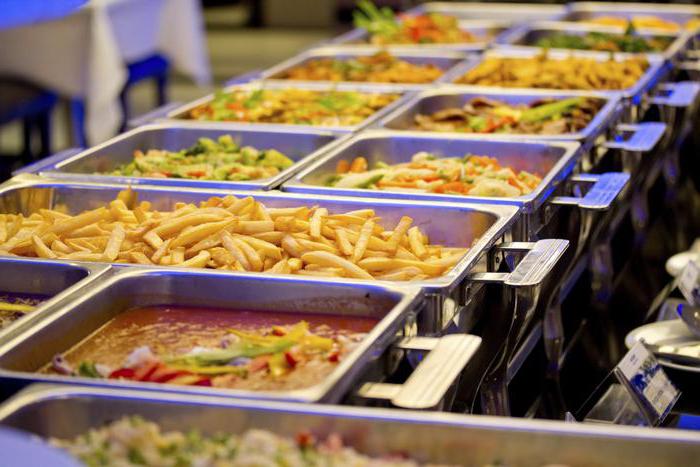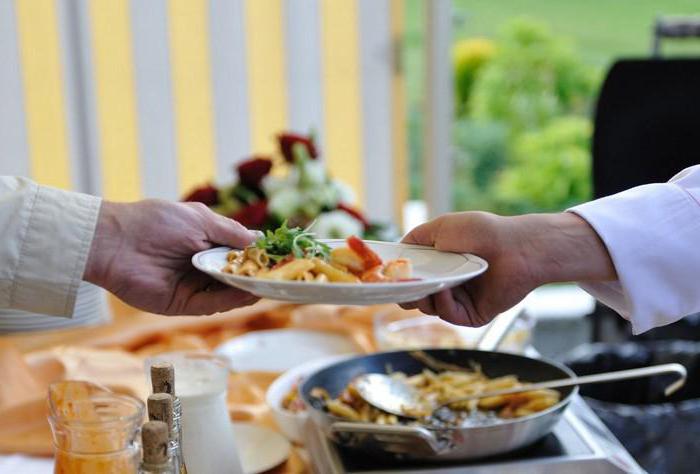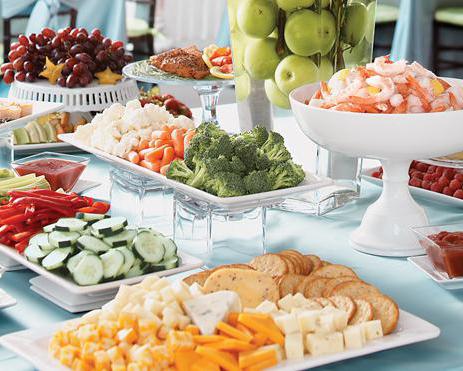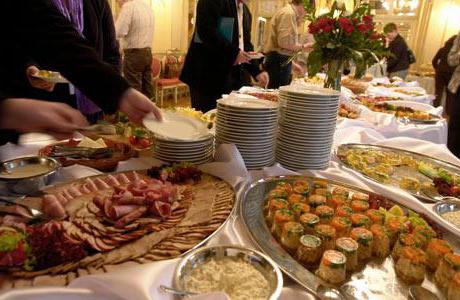The concept of catering is explained in GOST R 50647-94. This normative act was approved by the Decree of the State Standard of the Russian Federation No. 35 of 1994. In accordance with the specified GOST, the catering company is intended for the manufacture of culinary products, bakery and flour confectionery products, their sale or organization of their consumption. Today in the country there are a fairly large number of institutions and institutions involved in this activity. Let us further consider the main classifications of an enterprise operating in this area. 
Nature of production
As indicated by GOST, the classification of catering enterprises on this basis is as follows:
- Distributing organizations. These establishments sell finished products, which, in turn, are obtained from procurement and other enterprises. They have virtually no production activity. Distribution institutions organize the consumption of products in special rooms.
- Preparatory enterprises. They prepare dishes from culinary products and semi-finished products, sell and organize their consumption. Such organizations can act both independently and be part of the structure of a large company.
- Procurement enterprises. They can be represented by complexes of workshops or separate production units with separate or common tasks and functions. Such enterprises are intended for the mechanized centralized manufacture of bakery and confectionery products, culinary products and supply of pre-owned organizations, trading companies. They process raw materials and produce ready-made semi-finished products of varying degrees of readiness and products from fish, vegetables, meat and other things.
The classification of public consumption enterprises also provides for a mixed type of organization. They perform all the functions characteristic of the above structures. 
Range
This feature also provides for current GOST. The classification of catering enterprises by product range is as follows:
- Universal organizations. They make dishes from various types of raw materials.
- Specialized enterprises. They use only certain types of raw materials in production.
Today, filling the sphere of restaurant services has a horizontal direction. The establishments of Japanese and Chinese cuisine are quite common. At the same time, there are few restaurants with European and other dishes.
Service level
The classification of catering enterprises on this basis is of great importance both for the organizations themselves and for consumers. The level of service is a set of criteria that characterizes the quality of services. The current classification of catering enterprises on this basis applies to bars and restaurants. These establishments may have a level of:
- Suite This class involves a refined interior, a wide selection of services, increased comfort, a wide range of branded, refined, original products and dishes, cocktails, drinks.
- Higher. An enterprise of this class is distinguished by its original interior, a smaller choice of services than in the previous case, a diverse assortment of branded, original, exquisite custom-made products and dishes, cocktails, drinks.
- The first.This class involves choice, comfort of services, harmonious interior design, an assortment of branded drinks, products, dishes, cocktails of simple preparation, including those ordered.

The above classification of enterprises does not apply to eateries, cafes and canteens.
Situation in practice
Today it’s quite difficult to establish exactly which restaurant is expensive and which is average. This is due to a significant difference in income. For example, someone is willing to pay 2.5 thousand rubles. on the check, and someone - and all 10 thousand. At the same time, both the institution will not be accessible to most citizens. Difficulties in doing business are noted at enterprises in which the average check is not more than 300 rubles, because for this money the client is not offered a sandwich and tea. Bars, cafes, restaurants provide certain services, provide an opportunity in a pleasant environment to comfortably enjoy a delicious dish, get quality service.
At a low price, creating an appropriate atmosphere is extremely problematic, almost impossible. If the cost of the service is high, then difficulties arise with attracting customers. As professionals who have been working in the market for a long time, it is unprofitable to open an expensive restaurant today. The most promising institution is considered, the average check in which is 250-1100 rubles. This is currently the most unloaded sector. Establishments with such an average check are available to a large number of people. They should have a sufficient number of seats, and the restaurant or bar itself should be located in a good place. 
Service contingent
There is such a classification of catering enterprises. GOST defines the following types of organizations:
- Publicly available.
- Located at production facilities, in educational, medical and other institutions.
According to statisticians, the market of catering organizations is saturated very unevenly today. The following tendency is noted: the elite sector is filled to capacity, and there is a lot of space in the economy sector. Almost a similar situation is observed in the issue of territorial location. Today, very few enterprises are located in residential areas. 
Location of the institution
For the successful development of the restaurant business, one of the main factors is the place. It is necessary to take into account many parameters: transport and human traffic, infrastructure, visibility of the sign of an institution, the presence of office and residential buildings, the ability to park a car, and so on. A fine restaurant can be located in the basement, in the courtyard of the building.
In this case, a large amount of funds will have to be spent on advertising. However, even so, most likely, the profit of this institution will be lower than that which is located in a prominent place. In the center of this or that district, as a rule, there are many offices, whose employees dine somewhere every day. On a working day, you can attract customers with business lunches, and for the weekend, create an appropriate menu for those who want to relax. At the same time, competition is high in the center of the district. The owner of the institution will have to come up with some special offers, discounts to attract people.
The choice of location is closely related to the concept of the enterprise. So, it is quite appropriate to create an institution for family visits in a bedroom or elite area. If the stake is on youth, it is better to choose a center. In addition, you can open a restaurant in a popular area where there are already several such enterprises that everyone knows about. In this case, people will go there and definitely stop at some institution. In sleeping areas, there are also places where small cozy restaurants and cafes will be very popular due to the availability of educational and office facilities there.In remote places, good food is likely to be in demand on weekends and holidays when people travel away from the city to have fun. 
Working hours
This criterion also provides for valid GOST. The classification of enterprises depending on the time of operation is as follows:
- Operating constantly.
- Seasonal
According to statistics, about 80% of students use catering services in Russia. This should make canteens in educational institutions popular among young people. However, in reality, most students prefer to eat fast food. This is especially noticeable in large cities. These institutions are not associated with a place of study. This situation is caused by the popularity of the brand, affordable prices, more attractive in comparison with the dining mode of operation. In spring and autumn, summer cafes and mini-cafes can work. They differ in a relatively small assortment of products of their own production and purchased products. As a rule, they are located in semi-closed, closed type buildings, as well as on the basis of pavilions, kiosks. To serve people, portable light furniture is installed. Summer-spring cafes are located on the promenades, in parks and other places where visitors spend their time in warm weather. Such enterprises bring good seasonal profits. 
Place of operation
The classification of catering facilities on this basis provides for the separation of establishments into stationary and mobile. The first are, as a rule, in enclosed structures. It does not have to be a capital structure. A mini-cafe can also be located in a small pavilion. Typically, such enterprises operate continuously. Mobile establishments usually operate in season. They offer a narrow range of dishes.
Additional classification of enterprises
It involves the separation of institutions according to their functional affiliation. So, for example, services in automobile, sea, railway transport, as well as in airplanes, are allocated in a separate category. The classification of enterprises distinguishes the provision of services in hotels, hotels, guest houses. This type of service is a specific type of activity that covers different market segments. Exit provision of services, production of culinary products has its own characteristics. In the field of quick service, there are street kiosks and stationary establishments. As for the social sector, here the classification of enterprises is carried out upon the fact of primary activity (services in correctional institutions, hospitals, schools, universities and so on).








